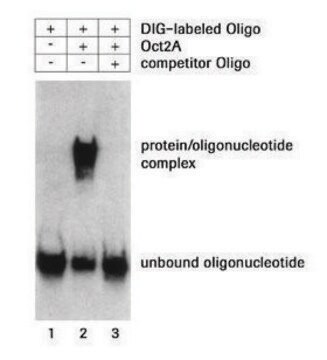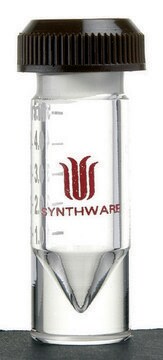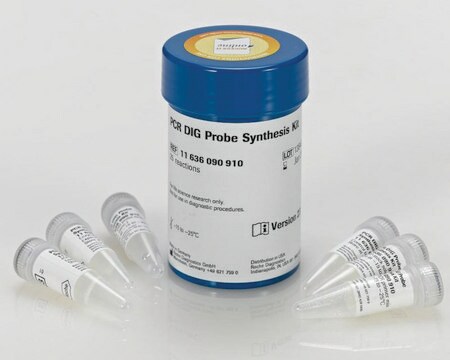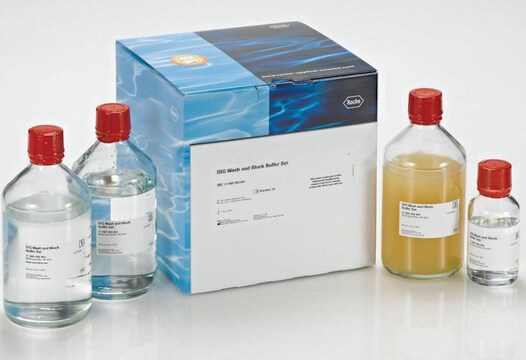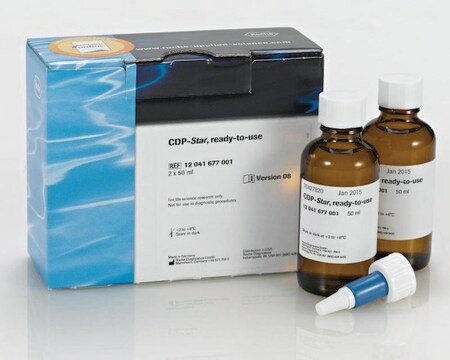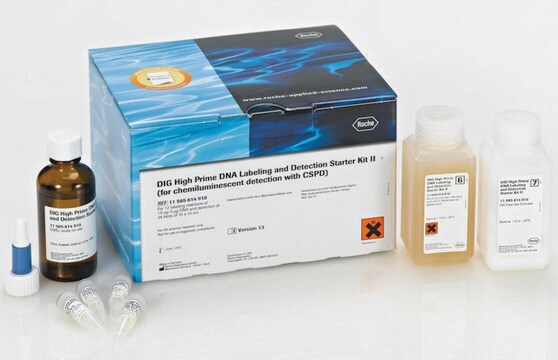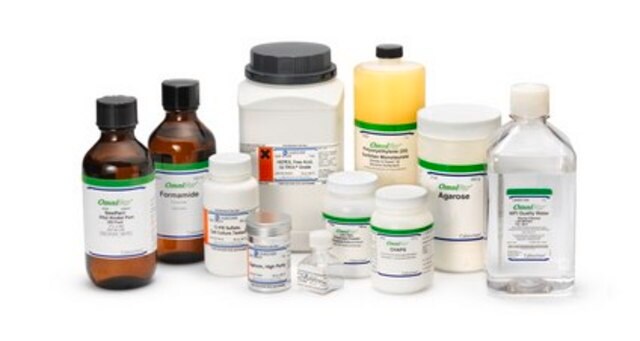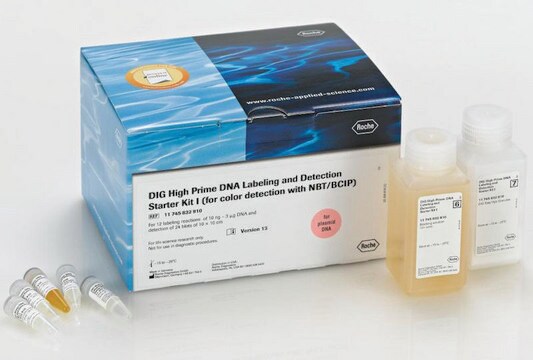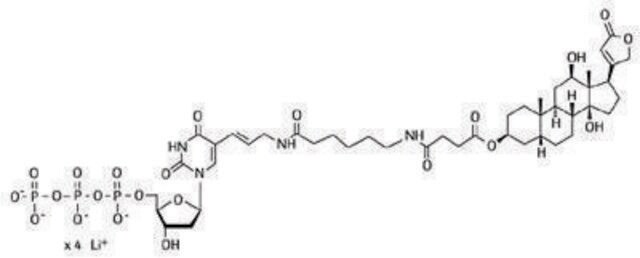03353575910
Roche
DIG Oligonucleotide 3′-End Labeling Kit, 2nd generation
sufficient for 25 labeling reactions (100 pmol of oligonucleotides per assay; 1 ug of a 30-mer oligonucleotide), storage condition avoid repeated freeze/thaw cycles
About This Item
Prodotti consigliati
impiego
sufficient for 25 labeling reactions (100 pmol of oligonucleotides per assay; 1 ug of a 30-mer oligonucleotide)
Livello qualitativo
Produttore/marchio commerciale
Roche
Caratteristiche più verdi
Designing Safer Chemicals
Learn more about the Principles of Green Chemistry.
sustainability
Greener Alternative Product
Categoria alternativa più verde
, Aligned
Condizioni di spedizione
dry ice
Descrizione generale
Applicazioni
DIG-labeled oligonucleotides has been used in a variety of hybridization techniques:
- dot/slot blots
- colony/ plaque hybridizations
- Southern blots/ northern blots
- in situ hybridizations
Caratteristiche e vantaggi
- Fast hybridization kinetics, due to the small size of oligonucleotides
- Single-stranded probes, no renaturation during hybridization
- Sequence can be designed according to the experiment
- Specially suited for in situ hybridization; due to their small size, the oligonucleotides readily diffuse into fixed tissues and cells
Confezionamento
Qualità
Principio
Nota sulla preparazione
Working concentration: Oligonucleotides: 100 pmol
Up to 100 pmol (1 μg of a 30-mer) oligonucleotide can be labeled in a single standard labeling reaction.
Sample Materials
Oligonucleotides of a length from 14 to 100 nucleotides, purified by HPLC or gel electrophoresis
Stoccaggio e stabilità
Altre note
Solo come componenti del kit
- Reaction Buffer 5x concentrated
- CoCl<sub>2</sub> Solution 25 mM
- DIG-ddUTP Solution 1 mM
- Recombinant Terminal Transferase 400 U/μl
- Control Oligonucleotide, unlabeled 20 pmol/μl
- Oligonucleotide, DIG-ddUTP labeled 2.5 pmol/μl
- Control DNA, 2.5 pmol/μl pUC 18 DNA, supercoiled
- Glycogen Solution 20 mg/ml
- DNA Dilution Buffer, 50 μg/ml fish sperm DNA
Avvertenze
Danger
Indicazioni di pericolo
Consigli di prudenza
Classi di pericolo
Acute Tox. 4 Inhalation - Acute Tox. 4 Oral - Aquatic Chronic 2 - Carc. 1B Inhalation - Repr. 1B
Codice della classe di stoccaggio
6.1D - Non-combustible, acute toxic Cat.3 / toxic hazardous materials or hazardous materials causing chronic effects
Classe di pericolosità dell'acqua (WGK)
WGK 3
Punto d’infiammabilità (°F)
does not flash
Punto d’infiammabilità (°C)
does not flash
Scegli una delle versioni più recenti:
Possiedi già questo prodotto?
I documenti relativi ai prodotti acquistati recentemente sono disponibili nell’Archivio dei documenti.
I clienti hanno visto anche
Articoli
Digoxigenin (DIG) labeling methods and kits for DNA and RNA DIG probes, random primed DNA labeling, nick translation labeling, 5’ and 3’ oligonucleotide end-labeling.
Il team dei nostri ricercatori vanta grande esperienza in tutte le aree della ricerca quali Life Science, scienza dei materiali, sintesi chimica, cromatografia, discipline analitiche, ecc..
Contatta l'Assistenza Tecnica.
